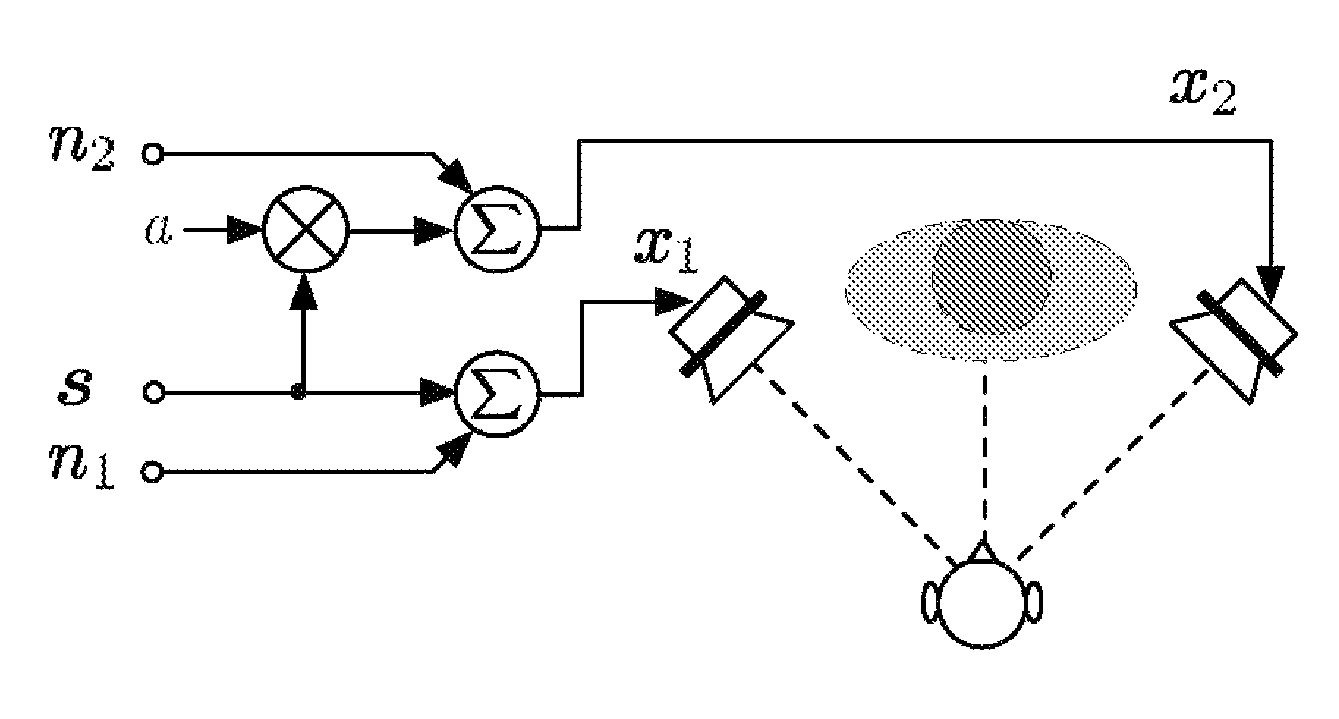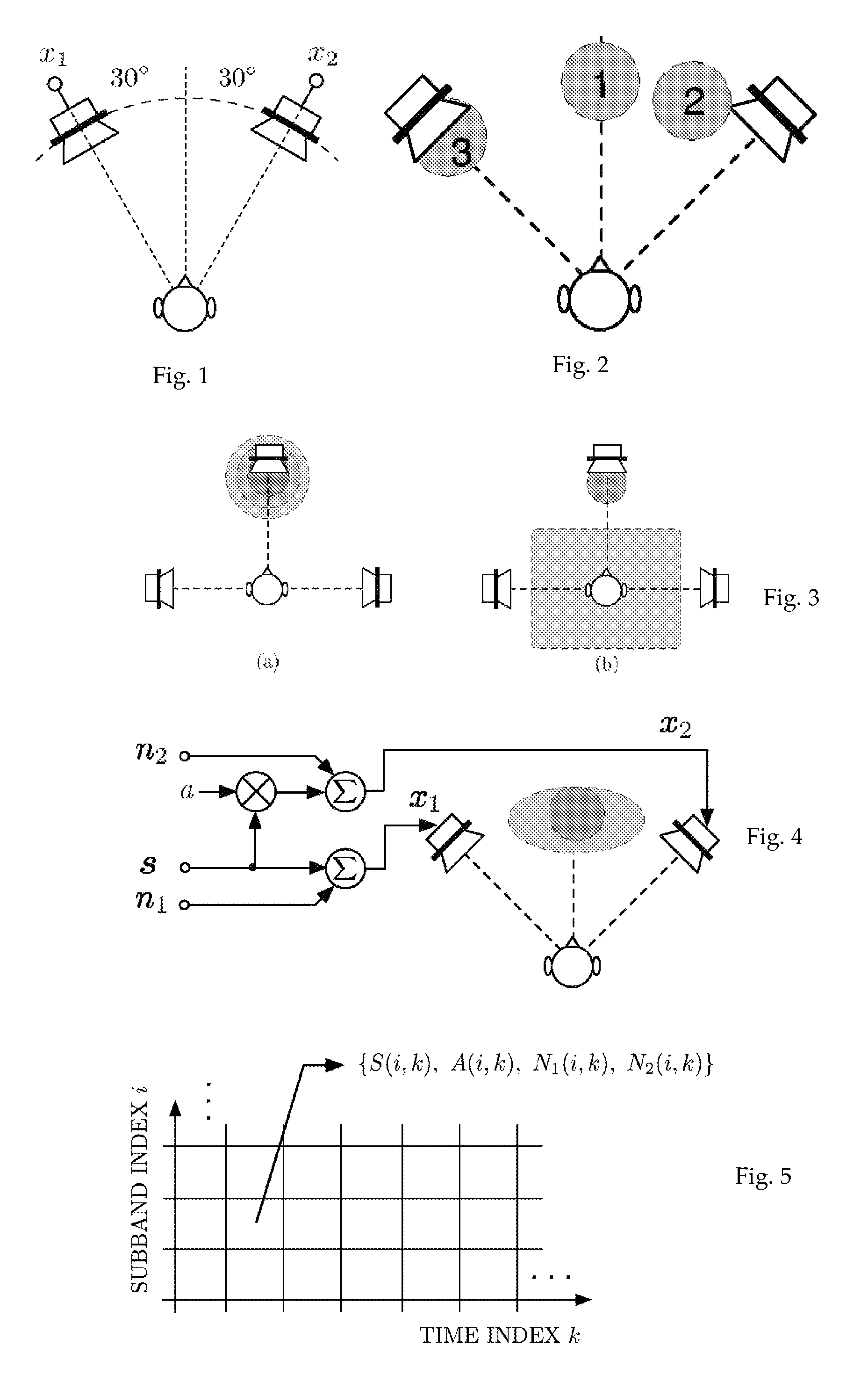Method to generate multi-channel audio signal from stereo signals
a stereo signal and multi-channel technology, applied in the field of stereo signal generation, can solve the problems of insufficient improvement of the technique over conventional stereo playback, many innovations beyond two-channel stereo have failed, and the system is compromised in the number of loudspeakers, etc., to achieve the effect of wide application and clear improvement of the techniqu
- Summary
- Abstract
- Description
- Claims
- Application Information
AI Technical Summary
Benefits of technology
Problems solved by technology
Method used
Image
Examples
numerical examples
[0069]The direction factor A and the normalized power of S and AS are shown as a function of the stereo signal level difference and Φ in FIG. 6.
[0070]The weights ω1 and ω2 for computing the least squares estimate of S are shown in the top two panels of FIG. 7 as a function of the stereo signal level difference and Φ. The post-scaling factor for Ŝ (18) is shown in the bottom panel.
[0071]The weights ω3 and ω2 for computing the least squares estimate of N1 and the corresponding post-scaling factor (19) are shown in FIG. 7 as a function of the stereo signal level difference and Φ.
[0072]The weights ω5 and ω6 for computing the least squares estimate of N2 and the corresponding post-scaling factor (19) are shown in FIG. 7 as a function of the stereo signal level difference and Φ.
[0073]An example for the spatial decomposition of a stereo rock music clips with a singer in the center is shown in FIG. 10. The estimates of s, A, n1 and n2 are shown. The signals are shown in the time-domain and ...
application examples
Television Sets
[0115]For playing back the audio of stereo-based audiovisual TV content, a center channel can be generated for getting the benefit of a “stabilized center” (e.g. movie dialog appears in the center of the screen for listeners at all locations). Alternatively, stereo audio can be converted to 5.1 surround if desired.
Stereo to Multi-Channel Conversion Box
[0116]A conversion device would convert audio content to a format suitable for playback over more than two loudspeakers. For example, this box could be used with a stereo music player and connect to a 5.1 loudspeaker set. The user could have various options: stereo+center channel, 5.1 surround with front virtual stage and ambience, 5.1 surround with a ±110° virtual sound stage surrounding the listener, or all loudspeakers arranged in the front for a better / wider front virtual stage.
[0117]Such a conversion box could feature a stereo analog line-in audio input and / or a digital SP-DIF audio input. The output would either be...
PUM
 Login to View More
Login to View More Abstract
Description
Claims
Application Information
 Login to View More
Login to View More - R&D
- Intellectual Property
- Life Sciences
- Materials
- Tech Scout
- Unparalleled Data Quality
- Higher Quality Content
- 60% Fewer Hallucinations
Browse by: Latest US Patents, China's latest patents, Technical Efficacy Thesaurus, Application Domain, Technology Topic, Popular Technical Reports.
© 2025 PatSnap. All rights reserved.Legal|Privacy policy|Modern Slavery Act Transparency Statement|Sitemap|About US| Contact US: help@patsnap.com



